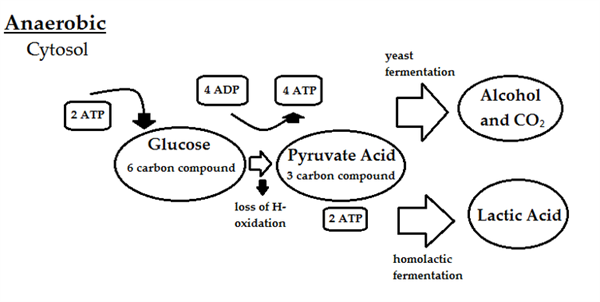PDF chapter test TRY NOW
As discussed the food material taken in during the process of nutrition is used in cells to provide energy for various life processes and this is known as cellular respiration.
Where does cellular respiration take place?
Cellular respiration takes place in both the cytosol and mitochondria of cells.
The energy generated by the mitochondria is stored as potential energy in molecules called adenosine triphosphate (ATP).
ATP is the most important molecule produced during cellular respiration. The energy released during respiration is stored as ATP, which is a standard unit. Because of its critical role in cellular respiration, the mitochondrion is known as the cell's "powerhouse".
What happens during cellular respiration?
During the process of cellular respiration organic compounds are broken down through enzyme-catalyzed processes (usually carbohydrates or fats). A tiny quantity of energy is channeled into ATP molecules during these enzyme processes along with the production of carbon dioxide and water.

A generalized equation for cellular respiration
Types of cellular respiration:
Fate of pyruvate:
The first step of cellular respiration is the breakdown of glucose, a six-carbon molecule [6C], into a three-carbon molecule [3C] called pyruvate a is common in all the organisms. This pyruvate is further broken down into various products in the presence and absence of oxygen.

The fate of pyruvate
Based on this the process of cellular respiration is of two types:
- Aerobic cellular respiration
- Anaerobic cellular respiration

Types of cellular respiration
Aerobic cellular respiration:
The process wherein the three-carbon pyruvate molecule breaks down to give three molecules of carbon dioxide and one molecule of water in the presence of oxygen is known as aerobic respiration.
Glucose carbon dioxide + water + energy.
This process occurs in the mitochondria of the cells. The amount of ATP generated through the process of aerobic respiration is greater than the ATP generated through anaerobic respiration.
Anaerobic cellular respiration:
The process of respiration in that occurs in the absence of oxygen is known as anaerobic respiration.

The process of anaerobic respiration
Reference:
https://commons.wikimedia.org/wiki/File:Anaerobic_diagram.png
https://commons.wikimedia.org/wiki/File:Fate_of_Pyruvate.svg
